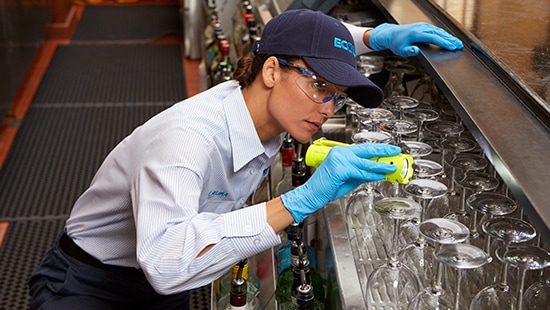A Comprehensive Overview to the Various Sorts Of Pest Control Approaches
With the myriad of parasite control techniques offered, it can be overwhelming to find the most reliable option for a particular pest issue. In this comprehensive guide, we will certainly explore these various types of pest control approaches, providing understandings right into their applications and advantages. By the end, you will certainly have a more clear understanding of which approach may be the ideal fit for your pest control requirements.
Chemical Pest Control Approaches

One typical kind of chemical insect control is pesticides. Pesticides target specific pests, such as mosquitoes, termites, or ants, and can be utilized both inside and outdoors.
One more type of chemical pest control is rodenticides. These are chemical compounds designed to manage populations of rodents, such as rats and computer mice.
Weed killers, likewise known as herbicides, are another kind of chemical insect control approach. Herbicides are developed to precisely kill undesirable plants, referred to as weeds, without causing injury to preferable plants. They are generally used in farming, landscape design, and horticulture to control the growth of undesirable plants.
While chemical bug control approaches can be extremely effective in removing insects, it is very important to utilize them carefully and adhere to safety standards. Overuse or abuse of chemical pesticides can have unfavorable influences on human wellness and the environment. Therefore, it is important to utilize these techniques properly and take into consideration alternate parasite control strategies whenever feasible.
Organic Bug Control Approaches
Organic bug control methods entail the usage of living organisms or all-natural substances to manage and regulate pest populations. Unlike chemical methods, which frequently rely upon artificial chemicals, organic control techniques utilize the all-natural adversaries of parasites to manage their populations. This strategy is taken into consideration even more eco-friendly and lasting, as it decreases the usage of hazardous chemicals and decreases the threat of pesticide resistance.
One widely made use of biological pest control method is the intro of natural predators or bloodsuckers. Ladybugs are introduced to control aphids, while certain wasp species are launched to target caterpillars. These killers and bloodsuckers feed on parasites, lowering their numbers and stopping invasions.
Another organic control approach is making use of microorganisms. Specific germs, infections, and fungi can be used to contaminate and eliminate details bugs. For instance, the bacterium Bacillus thuringiensis is frequently utilized to control caterpillars, as it generates Visit This Link contaminants that are dangerous to these pests.
Organic control methods can likewise include using pheromones or natural materials that interrupt the breeding patterns of parasites. By disrupting their reproduction, these techniques help to decrease pest populaces in time.
While biological bug control techniques are usually effective, they might call for longer durations to achieve desired results contrasted to chemical techniques. Furthermore, mindful consideration must be provided to the option and release of all-natural adversaries to stop unplanned harm to valuable microorganisms or ecosystems.
Physical Insect Control Approaches
To properly manage and control pest populaces, alternative parasite control techniques referred to as physical insect control approaches are utilized. These approaches involve making use of physical obstacles, traps, or tools to protect against pests from accessing or damaging building. One common physical insect control approach is making use of displays or nets to maintain insects out of buildings or gardens. These displays are usually made from great mesh material that enables air flow while stopping insects from my company entering. Another physical parasite control method is the setup of fencings or walls to maintain larger parasites, such as deer or bunnies, out of gardens or agricultural areas. These obstacles literally obstruct the pests' accessibility to the location, minimizing the capacity for damages. In addition, traps and tools can be utilized to catch or push back bugs. For instance, sticky catches can be positioned in locations where insects are a problem, and the insects end up being adhered to the adhesive surface area. Ultrasonic tools can additionally be utilized to give off high-frequency audios that are undesirable to parasites, triggering them to leave the area. Physical bug control techniques are an eco-friendly option to chemical pesticides, as they do not depend on the use of hazardous chemicals.
Natural Parasite Control Techniques
All-natural bug control approaches provide a sustainable and eco-friendly method to handling and eliminating insects. One of the most common all-natural bug control techniques is biological control. By taking on these all-natural insect control approaches, individuals and areas can efficiently handle pests while decreasing the negative influences on the environment and human wellness.
Integrated Parasite Administration (IPM)
Integrated Pest Monitoring (IPM) is an extensive and systematic approach to pest control that combines various techniques and methods to efficiently handle bugs while reducing using chemical pesticides. IPM intends to preserve parasite populaces below the economic injury level by utilizing a combination of cultural, biological, and chemical control techniques.
Social control approaches entail modifying the setting to make it less desirable for pests. This can include techniques such as plant rotation, appropriate cleanliness, and best home termite treatment using resistant plant ranges. By developing undesirable conditions for bugs, cultural control techniques can substantially lower bug populaces.

Chemical control methods are used as a last option in IPM. They entail the targeted and wise usage of chemicals to manage parasite populaces. Unlike conventional parasite control approaches, IPM intends to minimize the use of chemical pesticides by utilizing alternative approaches.
Integrated Insect Administration (IPM) is an aggressive method that focuses on lasting parasite management instead of counting exclusively on reactive measures. By integrating multiple control techniques, IPM supplies a much more sustainable and eco friendly technique to pest control.
Conclusion
It discussed chemical, organic, physical, and all-natural bug control approaches, as well as the incorporated insect monitoring approach. By recognizing these various techniques, people can make educated decisions on which insect control method is most appropriate for their specific needs and choices.